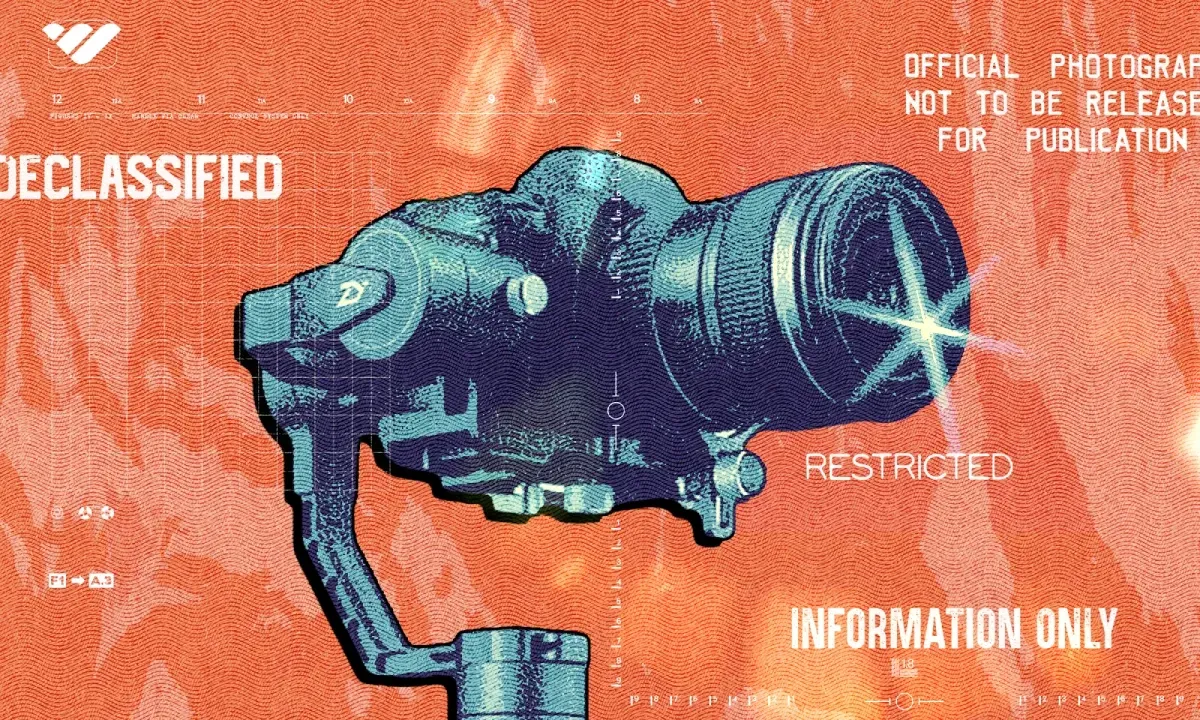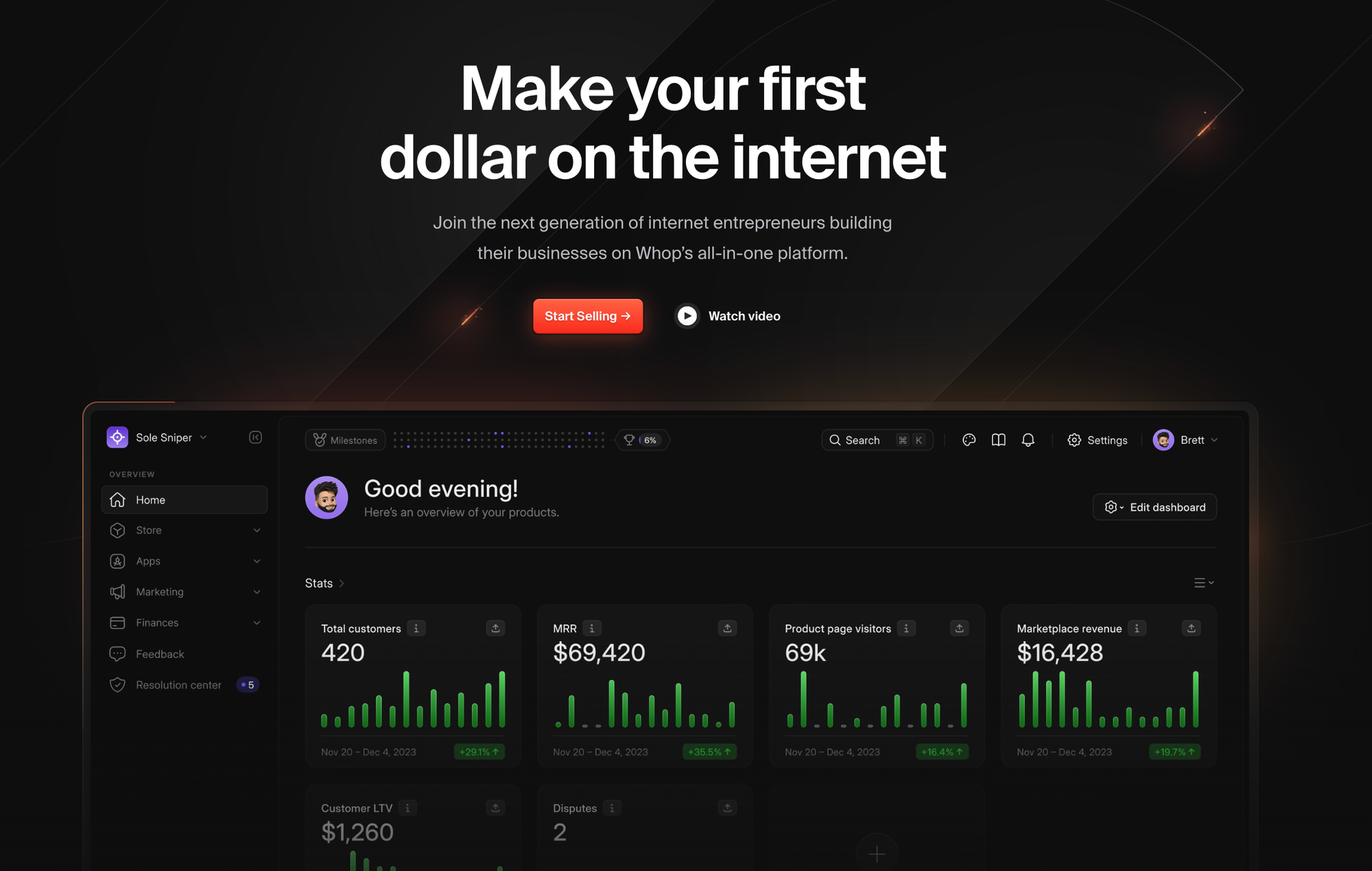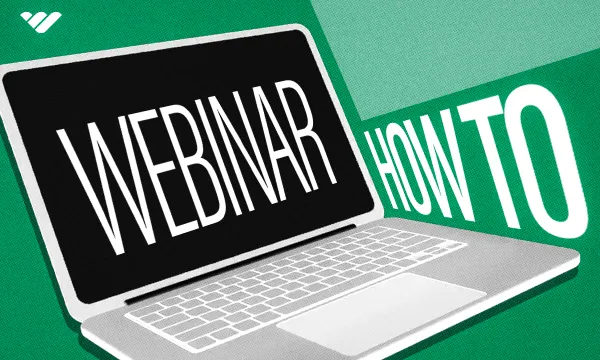As a successful entrepreneur, you are likely aware of the value of digital marketing when it comes to shining a spotlight on your products and services. You're probably also familiar with webinars and have attended a few yourself.
But have you hosted one? Webinars are one of the most powerful marketing strategies available — in fact, recent studies show that 89% of marketing professionals agree that webinars continue to outperform other channels when it comes to lead generation.
The good news is that creating and hosting a webinar is easier than you think. In this guide, we'll introduce you to the basics of constructing a dynamic and versatile webinar that will get your business noticed.
How to Create a Webinar in Seven Steps

So you know that a hosting a webinar is right for you - but first, you have to actually create it. Don't worry, we've got you covered every step of the way, from choosing a compelling topic to engaging with your audience.
Whether you're a novice ready to launch your first webinar, or looking to fine-tune your approach, here are the essential steps you need to take to ensure that your webinar is professional and effective.
Let's get started.
1. Choose a Topic for Your Webinar
A compelling topic is the first step in creating a webinar that resonates with your target audience. Your topic should be relevant and interesting, and add value for your intended audience. If you're struggling to identify a good topic, ask your audience! Carry out a survey, or put it out there on social media to see what their areas of interest are. You can also look through your popular content to identify common themes.
Your webinar should provide a medium for your specific expertise to shine — so pick a topic where you can offer deep knowledge and insights.
Some popular webinar topics include:
- Education and industry evolution
- Mental health and wellness
- Product demos
- Productivity hacks
- Personal development
- Entrepreneurship
- Current affairs and events
2. Schedule a Date and Time
This may seen like a given, but many people underestimate how crucial timing is for a webinar.
Timing is an important factor in ensuring maximum participation among your target audience. Avoid scheduling your webinar during holidays or industry events, and if you're going for a global reach, consider offering multiple sessions to accommodate different time zones.
The reason why timing is number two on this list is that you have to provide plenty of advance notice. Provide at least three weeks notice to allow people time to register and plan their schedules - and make sure to send out regular reminders.
3. Create Your Branding
Effective webinars accurately reflect their brand's identity. Strong, consistent branding establishes credibility and helps make your webinar memorable. Here's what you need to know about crafting a strong branding message:
Webinar Title: a clear but catchy title that conveys the value of your webinar helps create initial interest and encourages registration.
Visual Aids: eye-catching visuals for your webinar promotional materials, such as social media posts and email templates, also help generate interest.
Brand Consistency: shapeshifting and otherwise inconsistent branding comes across as confusing and unstable. Your branding should be consistent across promotional materials and throughout the webinar itself.
4. Start Marketing Your Webinar
You've now got your topic, branding, and set a date. It's time to start selling access to your webinar.
The right marketing message, sent across a range of channels, is essential to attracting participants to your webinar. Email campaigns are an excellent starting point — send targeted, short-and-sweet invitations and reminders to those on your subscriber list. The next step is to promote your webinar across your social media accounts using storytelling methods to generate interest and engagement.
Use pop-up messages or a visually appealing banner on your website to catch the attention of visitors. You could also collaborate with other businesses or relevant influencers to widen your reach.
5. Refine Your Content
You know what you are going to talk about, but how are you going to deliver the message? Being properly prepared helps ensure you deliver engaging material that adds value to your audience and also promotes a sense of confidence that will shine through to your audience. Nobody wants to listen to a directionless ramble for an hour, no matter how interesting the topic is.
Here's how you can ensure that you deliver an engaging webinar that stays with your audience for all the right reasons.
Create an Outline
Taking the initial step of creating a detailed outline will provide you with an actionable framework from which to build your content. This doesn't have to be a full script that you read word-for-word (in fact this will have the opposite effect, leaving your audience feeling lectured to rather than engaged with).
Your outline should include an introduction, main points and a conclusion, with brief touch-points in each section so that you can organize your thoughts and design the flow of your webinar. A clear outline will also make it easier for you to create visual aids and other supporting materials, while also serving as a reference during the presentation itself.
Add Visuals
Professional and aesthetically appealing slides will bring your message to life. Use bullet points, carefully curated images, and infographics to enhance your audience's viewing experience. Create a polished look with consistent use of color schemes, fonts and design elements that don't distract from the main message of your presentation. Remember to reflect your branding here as much as possible.
Incorporate Interactive Elements
Cognitive scientists say that on average, a listener will tune out after ten minutes. So how do you keep your audience listening during a 40-minute (or longer) webinar?
You stop talking. Use interactive elements to bring your listeners into the discussion every ten minutes or so. Incorporating interactive elements such as polls, Q&A sessions and real-time demonstrations encourages audience engagement — and also provides you with insights into your audience's interests and concerns. Have ten minutes of talking, five minutes of engagement, and repeat, to keep your listener's minds active and engaged.
People also tend to remember webinars they've actively participated in better than those in which they were simply passive viewers.
6. Practice, Practice, Practice
You're undoubtedly familiar with the old adage that practice makes perfect. There's a good reason why this saying hasn't faded into obscurity — because it's 100% true. Practicing your webinar promotes confidence and a smooth delivery, and helps ensure you cover your content within the allotted time frame.
Practice sessions are valuable because they familiarize you with the content and flow, but don't stop there. Perform technology checks to make certain that your internet connection, webinar platform, and equipment are functioning as they should.
7. Time to Host Your Webinar!
Once you have completed steps 1-6, you're ready to host your webinar. In the following section of this guide we will cover where you can host it - these following tips are designed to help you ensure a successful live webinar when the big day comes:
Set Up Early: You should be logged into your webinar platform at least 30 minutes before you're slated to start. This gives you time to mentally prepare and troubleshoot any last-minute issues that may arise.
Greet Your Audience: Welcome attendees individually as they arise and encourage engagement by responding thoughtfully to questions and comments.
Keep Calm: Remain calm and maintain a professional demeanor throughout the webinar, and handle any technical issues gracefully.
Where Can I Host a Webinar?

When it comes to deciding on where to host your webinar, there are several popular platforms available. Each comes with its own unique features and benefits and one may be more suited to you than the other. Here are the top three places that you can host your webinar:
1.🏆 Whop
Whop is a social commerce platform is designed to help you create and sell a whole range of digital products: including webinars. With Whop, you create your own whop, which is your online hub. Within your hub you can add different apps to design your online space. To host a webinar, you can simply add the video app for your live call, a chat app for community conversation, and a files app to distribute any related downloadable materials.
Interactive Toolkit: Whop provides all the tools you need to deliver professional and interactive online events, including community chat, video, forums, files, suggestions, and more.
Build Your Community: Create your very own whop and start building an online community to share your webinar with.
Unlimited Time: There is no time limit on your webinar in Whop, so your guests will not be kicked out mid-conversation.
No Upfront Costs: Whop is completely free to use. There are no platform fees, and there is a small 3% fee on sales. This means that you are not left out-of-pocket trying to sell enough tickets to cover the costs of using the platform. Whop only makes money if you make money.
2. Zoom
Zoom is a popular choice for webinars thanks to it's long-standing reputation. For those wondering how to host a webinar on Zoom, the platform's robust offerings include the following features:
High-Quality Video and Audio: Clear video and audio are essential for professional presentations.
Interactive Toolkit: Real-time polls, Q&A capability, and chat features help optimize audience engagement.
Recording: Recording your webinar allows you to save it for future use and to share it with others.
Scalability: Host webinars for a range of audience sizes with ease.
There are some disadvantages to take into consideration. Firstly, Zoom Video Webinars come with upfront costs - starting at $40/month for 100 attendees up to $6490/month for 10,000 attendees.
You can get around this by using a regular Zoom meeting rather than the specalized Zoom Webinar option. However, if you decide to go this route, you are limited to 40 minutes - after which the call will abruptly end.
3. Microsoft Teams
Microsoft Teams provides another powerful webinar platform and is particularly suited for businesses that already have Microsoft 365 functionality. Key features include the following:
Integration With Microsoft 365: Microsoft Teams allows seamless integration with other Microsoft tools such as OneDrive and Outlook.
Interactive Features: Live chat, polls, and breakout rooms provide a variety of ways for attendees to engage.
Robust Security: Microsoft's strong security features help keep your webinar content safe.
Like Zoom, Microsoft Teams is not free to use for Webinars. Features and participant limitations are paywalled behind different membership tiers to the platform.
Hosting Prerecorded Webinars

If after reading this guide you are having second thoughts about a live webinar, then why not host a prerecorded webinar instead?
Prerecorded webinars can be offered at scheduled times and/or on an on-demand basis. Here are the pros and cons of prerecorded webinars compared to their live counterparts:
Pros of Prerecorded Webinars
- Viewer Flexibility: Viewers have the option of watching prerecorded webinars at their own convenience, increasing accessibility and reach.
- Control of Content: Prerecorded webinars allow you to have complete control over the content. You can edit out the rough patches and fine-tune them to perfection.
- Consistency: You'll be able to deliver the same quality of content throughout a series of webinars — something that isn't always possible with live options.
Cons of Prerecorded Webinars
- Lack of Interaction: The lack of real-time interaction means a decrease in audience engagement.
- Less Immediate Feedback: Prerecorded webinars also don't provide opportunities for immediate feedback or questions from the audience.
After the Webinar — What Happens Next?
You may be wondering what happens after you end your webinar. Well, webinars don't have to end when the presentation comes to a close. They act as a key part of your marketing funnel, and so it is crucial that you continue to put in the work once the webinar has ended.
Here's how to proceed after the webinar to turn those leads into solid sales:
Follow Up
Sending follow-up emails to attendees thanking them for their participation helps keep the momentum going and shows attendees that you value them. Include a brief summary of the webinar and its key takeaways, and express authentic appreciation for their time and engagement.
Finish up with a compelling call to action, such as inviting them to download additional resources, schedule a customized consultation, or register for upcoming events. Clear next steps encourage them to continue their interaction with your company and keep your products or services fresh in their minds.
Share Notes and Slides
Providing audience members with access to slides and other resources helps to reinforce the information presented in the webinar and contributes to its overall value. Consider creating a blog post or a downloadable PDF that summarizes the webinar. This will aid retention and benefit participants who may have missed or been distracted through parts of the live session. Remember, the goal is to keep your audience engaged with the webinar long after it ends.
Analyze Feedback
Use feedback from the audience to figure out what worked well and what you can do better next time, and look for common themes in the feedback to identify strengths and help pinpoint areas that could use some improvement. Paying particular attention to comments and suggestions for future topics will help ensure that each of your webinars is better than the last.
Nurture Leads
The information gathered during your webinar will be invaluable for cultivating leads. Enhance conversion by segmenting your audience according to their interests and/or engagement patterns, sending them targeted emails with custom content. Include a link to the webinar recording for those who were unable to attend it live, and share additional resources such as relevant case studies, eBooks, and blog posts that align with the topic of the webinar.
Monitor your social media carefully in the days and weeks following your webinar so that you can address questions and concerns in a timely fashion. Share related content regularly, and post updates to keep attendees engaged with your brand.
Create Your Webinar With Whop

At the root of every successful webinar is a combination of thoughtful planning, effective marketing and engaging, memorable content. This beginner's guide will enable you to create and host a captivating webinar whether you choose to go the live route or the prerecorded option.
If you're ready to boost your digital marketing game and build a thriving community, host your webinar with Whop. Whop has everything you need to not only create and host dynamic webinars, but also share pdfs, premium content, and build a loyal community around your brand.





